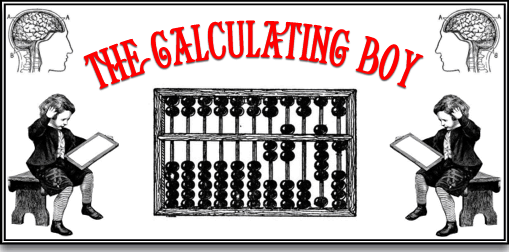
At Moretonhampstead in the early 1800’s there lived a family called Bidder which comprised of William the father, Elizabeth the mother and three sons, William, John, and George. The family trade was that of stone masons and when George, the youngest son was born in 1806 it looked as if there would be plenty of boys to carry on the business. During his formative years, John taught George numbers by using the face of his watch, he also taught him to count up to one hundred. The young boy developed a passion for counting, often using marbles, conkers, or shot to work sums out. It did not take long for him to learn how to do the sums in his head an ability which was proven to his parents one night. George had gone to bed but could hear his parents trying to calculate how much the family pig would make when it was taken to the butchers. The boy became frustrated at their mathematical attempts and immediately shouted the answer down the stairs.
As he grew older, George would often sit in the local blacksmith’s shop and earn some pocket money by performing complicated multiplication sums in his head for which people would give him the odd penny or two.
By the time he was seven the local schoolmaster and minister, Jacob Isaac examined him and ascertained that whilst he had problems with his reading he had an exceptional ability for sums. Shortly afterwards his father realised that his talents could prove profitable and so he started taking him to local fairs and shows where he would demonstrate his skills by solving sums in return for money. This became quite a lucrative arrangement and his father started taking him further afield where they would hire a hall, charge admission and entertain the audience with mental mathematical dexterity. George’s performances took him to such places as Cheltenham, Tewkesbury, Worcester, Birmingham, Dudley, Oxford, Cambridge, Norwich, Great Yarmouth, and London. In the winter of 1816 his fame had grown to such an extent that he was invited to perform infront of Queen Charlotte whom he astounded with his abilities. In 1816 two gentlemen who had witnessed his skills managed to reluctantly persuade George’s father to let him attend a school at Camberwell which he accordingly did for a year, after which he went on tour again.
In 1819, whilst George was performing in Edinburgh he came to the attention of a group of people amongst which was Sir Henry Jardine. He offered George a year of private tuition which was to be followed by studies at Edinburgh University. Here he studied mathematics and Natural Philosophy and made many friends including Robert Stephenson, the son of George Stephenson. During this time he managed to lose his ‘child prodigy’ status and simply became another student.
On leaving Edinburgh, George secured a position in the Ordnance Survey which kept him in Scotland for the next five years. In 1824 he then moved down to Cardiff and then on to London where he undertook various surveys. He then left the Ordnance Survey and went into Civil Engineering, working alongside a one-time assistant of Thomas Telford named Henry Palmer, their first major project was some surveys of the London Docks. In 1834 he transferred his skills to the new phenomenon of the railways where alongside his old university friend, Robert Stephenson, he worked for the Stockton and Darlington Railway.
Over the following years the two became involved in many railway projects in such places as Norway, Denmark, and Switzerland. Gradually his reputation grew as did his fortune which enabled him to give his family secure lives, it also allowed him to make investments in various companies such as the Electrical Telegraph Company, the Torbay and Dart Paint Company, the Buckland Slate Quarry, various Welsh coal mines and a slate quarry. He also never forgot the help which Sir Henry Jardine gave him and so established a scholarship for a student of limited means at Edinburgh University.
By the mid 1800’s, George Bidder began to spend more time in Devon where he developed a passion for sailing and purchased his own private yacht. This led to him visiting Dartmouth on a regular basis and in 1868 he was asked to stand for the town council, which he had to decline due to his commitments in London. In 1877 he bought a house at Stoke Fleming with the intention of moving permanently back to Devon but sadly he died in 1878 before he was able to do so.
Further Reading:
Clark, E. F. & Linfoot, J. J. 1983 The Calculating Boy, KSL Pub.,
 Legendary Dartmoor The many aspects past and present of Dartmoor
Legendary Dartmoor The many aspects past and present of Dartmoor
